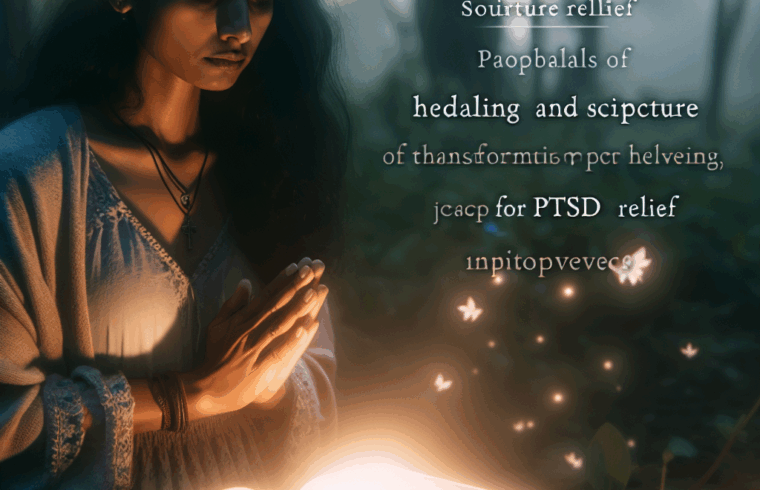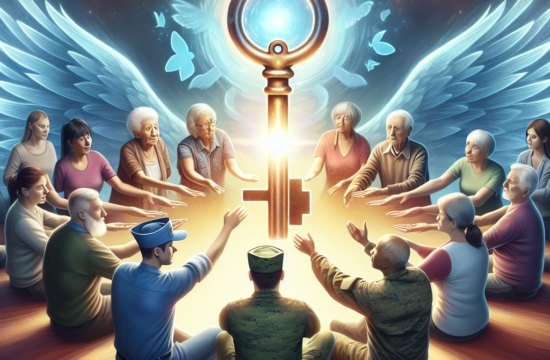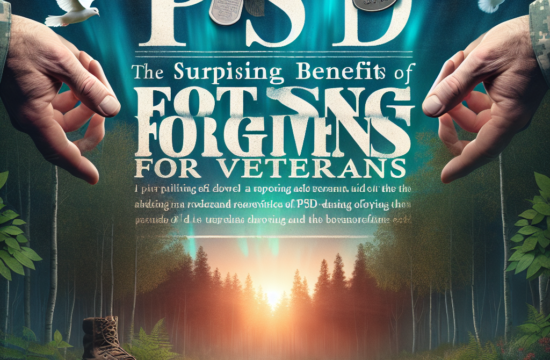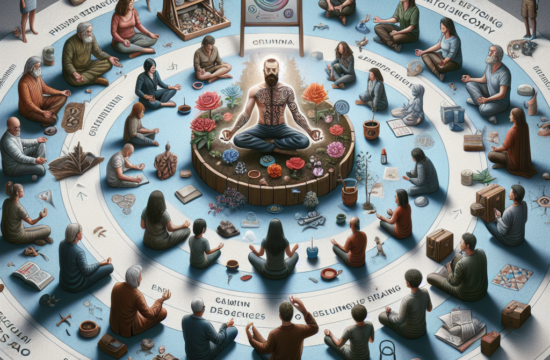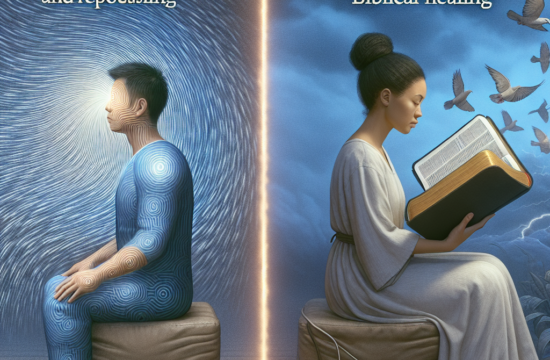==> Thank you for reading this post! Click Here If you are looking for support and Victory over PTSD.
Finding Peace Through Prayer
Understanding the Power of Prayer
I’ve always found solace in prayer, especially during tough times. It’s like talking to a friend who always listens. When dealing with PTSD, prayer can become an anchor, allowing me to express my fears and hopes without judgment.
In these moments, I find comfort in the belief that there’s a higher power watching over me. It’s reassuring to put my worries into words and send them out into the universe. I think about how many people have found strength in prayer throughout history. They’ve used these moments to breathe and find clarity, and I can totally relate.
Moreover, prayer helps create a routine. For me, it’s an opportunity to check in with myself and set my intentions for the day. This simple act became a ritual that offers both peace and perspective, reinforcing the belief that I’m not alone in my struggles.
Incorporating Scripture in Daily Life
Reading scripture has been another powerful tool for my healing journey. Certain verses resonate with my experiences and provide comfort during difficult moments. I find that meditating on these passages allows me to shift my focus away from anxiety and fear.
One of my favorite verses speaks to strength in weakness, reminding me that it’s okay to feel vulnerable and to seek help. Incorporating these words into my day-to-day life has allowed me to internalize their message, reminding me of my resilience.
I encourage you to find scriptures that speak to you. Write them down or place them around your living space. This has worked wonders for me, constantly reminding me of hope and strength when I need it most.
Creating a Prayer Journal
Keeping a prayer journal has been a game-changer for me. Writing down my thoughts and prayers helps in processing emotions that can feel overwhelming. It’s like getting everything out of my head and onto paper, which can be so freeing.
Over time, I started noticing patterns in my feelings—the things that triggered my PTSD— and it was empowering to see my growth documented on the pages. This visualization allowed me to track my healing journey and celebrate the small victories along the way.
Plus, revisiting past entries can bring a sense of closure. I can look back and see how far I’ve come and what I’ve overcome, which inspires me to keep moving forward. It’s a personal history of resilience!
Building a Supportive Community
Connecting with Like-minded Individuals
Finding a community of people who understand PTSD has been incredibly beneficial for me. It’s comforting to talk to others who share similar experiences. I found a local support group, and honestly, it’s one of the best decisions I’ve made.
Sharing my story and listening to others has created a sense of belonging. There’s no judgment here—just understanding and a collective effort to heal together. It’s cool to see how everyone brings their own insights, which often remind me I’m not alone in my struggles.
This sense of connection has helped lessen the isolation that PTSD often brings. We celebrate each other’s successes and provide comfort during tough times, forming bonds that go beyond the meetings. It feels safe to share my journey.
Engaging in Group Prayer
Being part of group prayers has brought a unique energy to my spiritual practice. There’s something special about gathering with others to pray, feeling the collective strength and hope. I didn’t think much of it at first, but it has truly enriched my experience.
The power of shared intention is incredible. Even when my voice feels weak, being surrounded by others amplifies my prayers and intentions. It’s like a team effort, and I can lean on others for strength when I’m feeling vulnerable.
I recommend trying group prayer if you can—whether it’s in a formal setting or with friends. It fosters a sense of unity and hope that uplifts my spirit in ways I didn’t expect.
Utilizing Online Resources
In today’s world, there are endless online communities and resources that can provide support. I’ve found various forums and social media groups where people openly share their journeys. It’s amazing to feel connected to individuals from all over the globe who are walking similar paths.
Online resources such as guided meditations, faith-based apps, and podcasts have introduced me to new ways of coping. They expand my spiritual horizons and offer fresh insights on healing through prayer and scripture.
Just make sure to engage in spaces that feel safe and supportive. This online availability has helped me feel like I’m tightly woven into a larger tapestry of healing, despite the physical distance!
Embracing Daily Affirmations
Crafting Personalized Affirmations
Daily affirmations have become a powerful part of my routine. I’ve learned that the words I tell myself matter greatly. With PTSD, it’s easy to fall into negative thought patterns, so I worked on creating affirmations that counteract those thoughts.
For instance, affirming my worth and strength has helped reshape my self-talk. Writing down meaningful statements and reciting them aloud gives me a boost when I need it the most. I always feel lighter and more positive afterward.
If you struggle with self-criticism or doubt, try crafting your own affirmations. Make them personal and reflect what you genuinely want to believe about yourself. It can change the game for your inner dialogue!
Repeating Affirmations with Intention
Repetition is key! I started saying my affirmations during morning routines, which helped set a positive tone for my day. It’s like giving my mind a refreshing jolt of positivity that pushes negativity out of the way.
I also repeat my affirmations during moments of stress or discomfort. Instead of letting fear take over, reminding myself of my strengths helps keep me grounded. It’s funny how saying a few simple words can shift my mindset so dramatically.
Creating rituals around my affirmations has been powerful. Whether I’m saying them in the mirror or writing them down in my journal, I feel like I’m creating a strong foundation for my healing journey.
Sharing Affirmations with Others
Believe it or not, I’ve found that sharing my affirmations with friends and family has amplified their effectiveness. It’s heartening to create a space where we can uplift one another through positive words. I love inviting others to join in and share their own affirmations as well.
Get Support and Help with Recovery! Visit us for more Information and Support
This practice has fostered deeper connections and opened up conversations around self-love and healing. It helps break down the isolating walls PTSD often builds. Seeing others embrace positivity is inspiring and encourages me to keep doing the same.
If you feel comfortable, start sharing your affirmations with a close friend or family member. You never know; it might spark a positive ripple effect in both your lives!
Nurturing the Body and Soul
Engaging in Mindful Practices
For me, nurturing my body as I heal spiritually has been crucial. I started integrating mindfulness practices like yoga and meditation into my routine. These practices allow me to connect deeply with my body and mind and find inner peace amidst chaos.
Yoga, in particular, has taught me about breathing through discomfort and being present. It’s been a revelation to see how physical movement can release pent-up emotions. No kidding—sometimes after a session, I feel like I’ve shed years of pain!
I challenge you to explore mindfulness techniques. Whether it’s yoga, meditation, or even a walk in nature, finding moments of stillness can significantly benefit your overall well-being.
Prioritizing Healthy Lifestyle Choices
It might sound cliché, but I am a firm believer in the connection between body and mind. Eating wholesome foods and maintaining a good sleep routine have made a world of difference. I’ve tried to focus on nutrition that fuels my body and mind.
When I eat well and hydrate, I notice a natural boost in my mood, which indirectly affects my spiritual practice. Paying attention to my health means I feel better equipped to face the challenges of PTSD.
If you’re looking for a change, consider incorporating more whole foods and establishing a solid sleep schedule. It’s simple, but small changes can lead to significant benefits in your overall emotional state.
Connecting with Nature
Spending time outdoors has been a tremendous source of healing for me. Nature has a way of calming my racing mind. Whether it’s a stroll in the park or hiking a local trail, being outside helps me reconnect with myself.
I often find solace in the simple sights and sounds of nature—the rustling leaves, chirping birds, and fresh air. These experiences remind me of the beauty in the world amidst my struggles. Embracing nature has been like therapy without the price tag!
I recommend making time to get outside whenever you can. Nature is such a nurturing place, and connecting with it often sparks gratitude and peace within.
Creating a Healing Routine
Setting Intentions for Each Day
Creating a daily routine has transformed my approach to healing. Each morning, I set my intentions, reminding myself of my priorities and what I want to focus on that day. This practice brings clarity and can help reduce feelings of being overwhelmed.
I often write my intentions down or speak them aloud. It’s surprising how much strength comes from articulating clear goals for my day. The more I do this, the more grounded I feel in my journey.
Try setting an intention each morning. It doesn’t have to be anything grand—sometimes simply wanting to be kind to yourself is a great place to start!
Choosing Healing Activities
In my routine, I’ve made it a point to engage in activities that nourish my soul. Whether it’s reading, painting, or working out, choosing hobbies that bring joy can shift your mindset and provide a much-needed escape from anxiety.
When I immerse myself in these activities, it’s like hitting the reset button. It helps remind me that life is about more than just my struggles. Focusing on passions revives my spirits and encourages creativity!
If you’re uncertain about what to do, think back to what once brought you joy. Rekindling old hobbies can work wonders for emotional healing.
Reflecting and Adjusting the Routine
Every now and then, I take a step back and assess my healing routine. It’s essential to recognize what’s working and what’s not. I’ve learned that flexibility is critical—sometimes, I need to adjust my habits based on how I’m feeling.
Developing a healing routine doesn’t mean locking yourself into a rigid schedule. It’s all about finding what resonates with you and making changes as life evolves. Listening to my needs has empowered my journey tremendously.
So don’t be afraid to experiment and modify your routine to suit your current state. You’re in control of your healing process!
Frequently Asked Questions
1. Is prayer really effective for PTSD relief?
Absolutely! Prayer can provide comfort, hope, and a sense of connection—qualities that are vital in healing. It allows for expression and reflection on one’s struggles, making it an impactful practice for many.
2. How can I incorporate scripture into my daily life?
Try starting with a verse that resonates with you and dedicating time to read, reflect, and meditate on it. Writing it down or creating a “scripture corner” in your home can keep these messages at the forefront of your mind.
3. What if I don’t have a supportive community?
If you’re struggling to find an in-person support group, consider searching online for forums or social media groups. Connecting with others via digital platforms can offer the same sense of community and understanding.
4. Can daily affirmations really change my mindset?
Yes! Daily affirmations can be powerful tools for reshaping your thoughts. They can help reinforce positive beliefs about yourself, combat negativity, and encourage resilience as you navigate your journey.
5. How do I start creating a healing routine?
Begin by identifying areas in your life you’d like to nurture. Set small, achievable goals each day, engage in healing activities you enjoy, and be gentle with yourself. Remember, it’s a personal journey, so adapt it to what works best for you!

